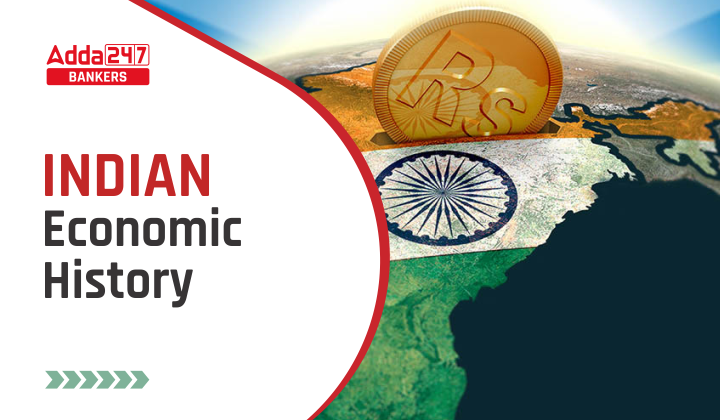Table of Contents
A general understanding of India’ economic history will help you how various schemes evolved in Indian economy. The history gives us the base to how to proceed for future development of the economy.
The Indian economy history dwells on the Five year plans. The Idea of Planning as a process of rebuilding the economy gained prominence in the 1940s-50s
What is a Five Year plan?
The Government of India prepares a document with all its income and expenditure for five years.
Here the list of Five year plans:
1st Five Year Plan: 1951- 1956
- It was based on the Harrod-Domar model with a adaptation for Indian economy.
- Objective : the agricultural development of the country.
- This plan was successful and achieved a growth rate of 3.6% ,more than its target of 2.1%.
- At the end of this plan, five IITs were set up in the country.
- It mainly addressed the agrarian sector, including investment in dams and irrigation. Ex- huge allocations were made for Bhakhra Nangal Dam.
2nd Five Year plan: 1956-1961
- It was based on the P.C. Mahalanobis Model made in the year 1953.
- Objective:The industrial development of the country.
- The government imposed tariffs on imports to protect domestic industries under this plan.
- This plan lags behind its target growth rate of 4.5% and achieved a growth rate of 4.27%.
- However, this plan was criticized by many experts and as a result, India faced a payment crisis in the year 1957.
- Note : PC Mahalanobis: father of Indian statistics
3rd Five Year Plan: 1961-1966
- This plan is also called ‘Gadgil Yojna’, after the Deputy Chairman of Planning Commission D.R. Gadgil.
- Objective : To make the economy independent. The stress was laid on agriculture and the improvement in the production of wheat.
- During the execution of this plan, India was engaged in two wars:
(1) Sino-India war of 1962
(2) Indo-Pakistani war of 1965.
These wars exposed the weakness in our economy and shifted the focus to the defence industry, the Indian Army, and the stabilization of the price (India witnessed inflation).
- The plan was a flop due to wars and drought. The target growth was 5.6% while the achieved growth was 2.4%.
Plan Holidays:1966-1969
- Due to the failure of the previous plan, the government announced three annual plans called Plan Holidays.
- The main reason behind the plan holidays was the 1965 Indo-Pakistani war and the 1962 Sino-India war, leading to the failure of the third Five Year Plan.
- During this plan, annual plans were made and equal priority was given to agriculture its allied sectors and the industry sector.
- In a bid to increase the exports in the country, the government declared devaluation of the rupee.
4th Five Year Plan:1969-1974
- Two objectives : growth with stability and progressive achievement of self-reliance, Based on Gadgil Formula,
- 14 major Indian banks were nationalized.
- Green Revolution was started.
- Indo-Pakistani War of 1971 and the Bangladesh Liberation War took place.
- Implementation of Family Planning Programmes was amongst major targets of the Plan
- his plan failed and could achieve a growth rate of 3.3% only against the target of 5.7%.
5th Five Year Plan:1974-1978
- This plan focussed on Garibi Hatao, employment, justice, agricultural production and defence.
- The Electricity Supply Act was amended in 1975, a Twenty-point program was launched in 1975, the Minimum Needs Programme (MNP) made by D.P. Dhar and the Indian National Highway System was introduced.
- Overall this plan was successful which achieved a growth of 4.8% against the target of 4.4%.
- This plan was terminated in 1978
Note: The termination of five year plan and bringing rolling plan shows the change in government and unstability of democratic setup in India. Student needs to correlate the economic history with the political history of India for better understanding
Rolling Plan: 1978-1990
- After the termination of the 5th Five Year Plan, the Rolling Plan came into effect
- In 1980, Congress rejected the Rolling Plan and a new 6th Five Year Plan was introduced.
- Three plans were introduced under the Rolling plan:
(1) For the budget of the present year
(2) this plan was for a fixed number of years– 3,4 or 5
(3) Perspective plan for long terms– 10, 15 or 20 years.
This structure will be seen in planning by Niti Aayog as well
- The plan has several advantages as the targets could be mended and projects, allocations, etc. were variable to the country’s economy. This means that if the targets can be amended each year, it would be difficult to achieve the targets and will result in destabilization in the Indian economy.
6th Five Year Plan:1980-1985
- Basic objective : economic liberalization by eradicating poverty and achieving technological self-reliance.
- It was based on investment Yojna, infrastructural changing, and trend to the growth model.
- NABARD was established
- Its growth target was 5.2% but it achieved a 5.7% growth.
7th Five Year Plan: 1985-1990
- Objective :The establishment of a self-sufficient economy, opportunities for productive employment, and up-gradation of technology.
- The Plan aimed at accelerating food grain production, increasing employment opportunities & raising productivity with a focus on ‘food, work & productivity
- For the first time, the private sector got priority over the public sector.
- Growth target was 5.0% but it achieved 6.01%.
2 Annual Plans: 1990-91& 1991-92
- Eighth Five Year Plan could not take place due to the volatile political situation at the centre. To accommodate that situation 2 annual plans were formed
8th Five Year Plan: 1992-1997
- Objective: development of human resources i.e. employment, education, and public health.
- During this plan, Goverment launched the New Economic Policy of India.
- Some of the main economic outcomes during the eighth plan period were rapid economic growth (highest annual growth rate so far – 6.8 %), high growth of agriculture and allied sector, and manufacturing sector, growth in exports and imports, improvement in trade and current account deficit. A high growth rate was achieved even though the share of the public sector in total investment had declined considerably to about 34 %
- This plan was successful and got an annual growth rate of 6.8% against the target of 5.6%.
- India became a member of the World Trade Organisation on 1 January 1995.
9th Five Year Plan: 1997 – 2002
- The main focus of this plan was “Growth with Social Justice and Equality”.
- It was launched in the 50th year of independence of India.
- This plan failed to achieve the growth target of 6.5% and achieved a growth rate of 5.6%.
10th Five Year Plan: 2002 – 2007
- This plan aimed to double the Per Capita Income of India in the next 10 years.
- It also aimed to reduce the poverty ratio to 15% by 2012.
- Its growth target was 8.0% but it achieved only 7.6%.
11th Five Year Plan: 2007-2012
- It was prepared by the C. Rangarajan.
- Its main theme was “rapid and more inclusive growth”.
- It achieved a growth rate of 8% against a target of 9% growth.
12th Five Year Plan: 2012-2017
- Main theme is “Faster, More Inclusive and Sustainable Growth”.
- Its growth rate target was 8%.
The five year planning had certain issues which reflected that for a country as diverse and big as India, centralised planning could not work beyond a point because its one-size-fits-all approach. Therefore, the NDA government dissolved the Planning Commission which was replaced by the Niti Aayog Thus, there is no 13th Five Year Plan, however, the five-year defense plan was made.
The present structure of planning in India:
The NITI Aayog was formed on January 1, 2015. In Sanskrit, the word “NITI” means morality, behaviour, guidance, etc. But, in the present context, it means policy and the NITI stands for “National Institution for Transforming India”.
NITI Aayog is developing itself as a state-of-the-art resource centre with the necessary knowledge and skills that will enable it to act with speed, promote research and innovation, provide strategic policy vision for the government, and deal with contingent issues. It is supported by an attached office, Development Monitoring and Evaluation Organisation (DMEO), a flagship initiative, Atal Innovation Mission (AIM) and an autonomous body, National Institute of Labour Economics Research and Development (NILERD).
It is the country’s premier policy-making institution that is expected to bolster the economic growth of the country. It aims to construct a strong state that will help to create a dynamic and strong nation. This helps India to emerge as a major economy in the world. The NITI Aayog’s creation has two hubs called “Team India Hub” and “Knowledge and Innovation Hub”.
- Team India: It leads to the participation of Indian states with the central government.
- The Knowledge and Innovation Hub: it builds the institution’s think tank capabilities.
It is important to note that the documents of the NITI Aayog have no financial role. They are only policy guide maps for the government.
Other Posts




 GA Capsule for SBI Clerk Mains 2025, Dow...
GA Capsule for SBI Clerk Mains 2025, Dow...
 The Hindu Review October 2022: Download ...
The Hindu Review October 2022: Download ...
 Important Days in April 2025, List of Na...
Important Days in April 2025, List of Na...




